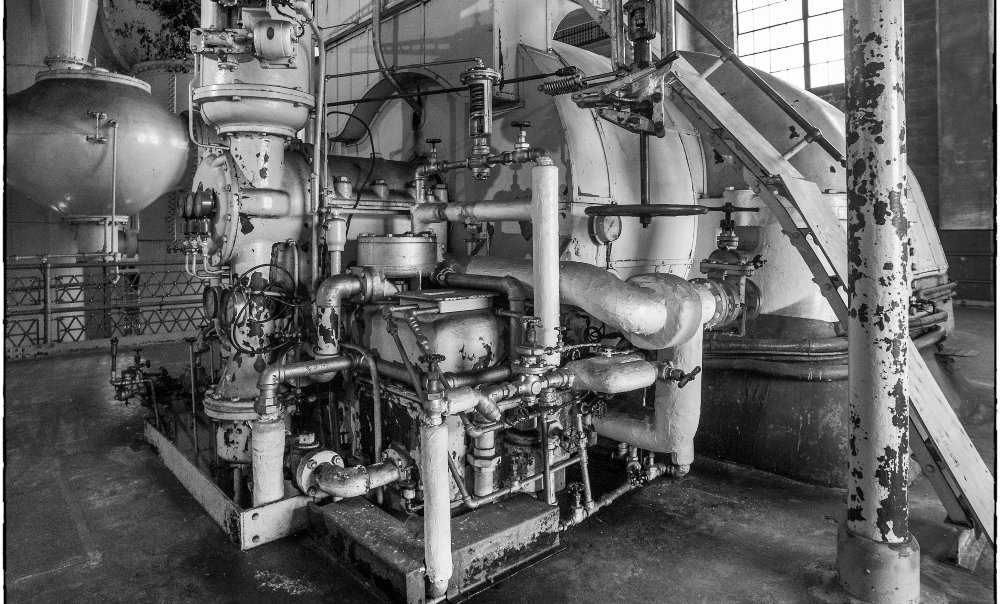What are the odds? Will a museum of old technology steer Seattle in a new direction? Can it lead the city towards developing a new SoHo, a creative arts neighborhood similar to New York City’s one-time artsy renaissance?
That notion occurred to me when I learned about plans for the historic Georgetown Steam Plant. The facility, cutting edge for its time, was built in 1906 by the Seattle Electric Company on an 18-acre plot of land along a curve — long since straightened out — in the Duwamish River channel. The steam plant housed two vertical Curtis turbines designed to power the city’s electric streetcar network more cheaply and efficiently than other generations at that time.
However, shortly after the plant was completed, hydropower became this city’s primary source of electric energy. The giant steam turbines, designed to run on either oil or coal, were used mainly to augment the less costly hydro power.
Ownership of the Georgetown Steam Plant passed in 1951 to Seattle City Light, which still owns the building and acreage. City Light — in a recent effort to open the property to the public — leased the decommissioned plant to a community development group (CDA).
Like a diamond in the rough, the plant brings with it not only its awesome past history but an imagined present. The steam plant is a Seattle Historic Landmark and National Historic Landmark as well as a National Historic Mechanical Engineering Landmark. The Georgetown facility lives up to its present status as a museum. Open free to the
public every other Saturday, the plant delivers an immersive history experience.
Those on conducted public tours learn that the building itself is one of the first reinforced concrete structures on the West Coast, a technique pioneered by Frank Gilbreth of “Cheaper by the Dozen” fame. They hear about the plant’s towering Curtis steam turbines and discover that Georgetown is the last such facility in the world to house vertical turbines that are still intact and in place. (The plant also houses a horizontal steam turbine.)
Heading the Georgetown Steam Plant’s nonprofit community development authority is Sam Farrazaino, who has had success in reclaiming other old buildings. To his credit he developed Equinox Studios in Pioneer Square, creating artists’ studios in a warehouse where bombsights were produced during World War II.
As CDA president, Farrazaino has grand aspirations for the Georgetown plant, which he says is “my favorite building in the whole world.” The goal he says is to turn the building into a community cultural center, a place to gather, learn, and celebrate serving Georgetown and South Park neighborhoods and the Duwamish River valley.
Development authority staffers currently are occupied with design work and fundraising. But even while the authority works on priorities such as safety and access, planning is underway for a second Georgetown Steam Plant Science Fair, set for Sept. 20 and 21. There will again be a Haunted History Tour and adventure at the end of October.
The authority continues to host quarterly arts performances featuring dance, music, and immersive theater. There’s a Georgetown Crowdsource Choir and a designated artist-in-residence, Sophia Wheelright in collaboration with Don Smith. New to the monthly open
houses is Xochitl Clare, a marine biologist and impromptu performance artist, who will be bringing ocean poetry to life.
Increasingly the Georgetown Plant is becoming a center for SHTEAM events (science, history, technology, engineering, art, and math.) Assisting with long-term vision for activities at the plant are local arts organizations, including King County’s 4Culture and Seattle’s Office of Arts and Culture.
While activities fill the Georgetown Steam Plant calendar, promising signs are taking place nearby. Housing developer Ben Rankin and former Seattle councilmember Richard Conlin have formed Conlin Columbia, a partnership working to produce moderate-cost housing and artists’ live/work units in Georgetown. A group of art galleries are now thriving in the Georgetown neighborhood.
Bringing together historic technology and creative activities is an encouraging beginning for turning the Georgetown area into an artists’ sanctuary. Just as Seattle’s Fremont and Capitol Hill neighborhoods once attracted this city’s imaginative archetypes so might Georgetown develop into the newest center for the city’s inventive artisans.
Discover more from Post Alley
Subscribe to get the latest posts sent to your email.

Thank you for this article, Jean! Folks should note the public open houses are the Second Saturday of every month, not every other Saturday. More information here, https://www.seattle.gov/city-light/in-the-community/tours-recreation-and-education/georgetown-steam-plant#visit
Also, Equinox Studios is located in Georgetown, not Pioneer Square. More info here, https://equinoxstudios.org/
Both places are definitely worth a visit!
The City’s old steam plant is a great setting to celebrate historic Georgetown, for filming rock videos, goth and steam punk events, and other activities. And our youngest daughter and spouse in December 2017 were married there in the first official wedding at the Plant.